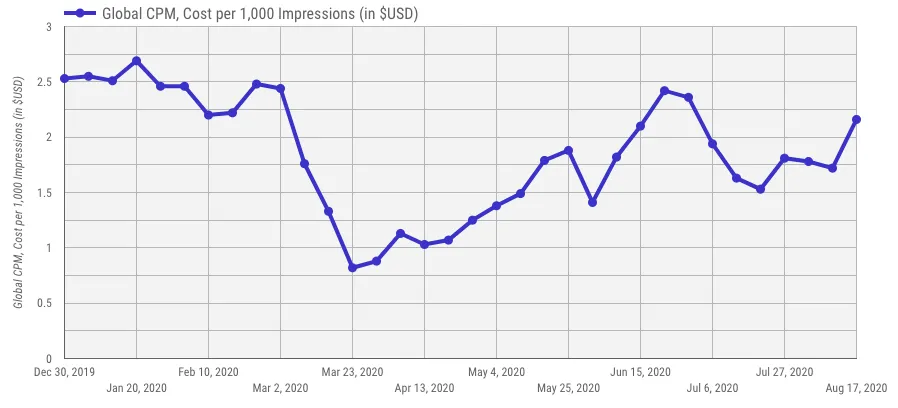Setting an ad spend budget when nothing seems stable
Only months ago, marketers could rely on long-standing benchmarks to help set their ad spend budgets. With the onset of COVID-19, those benchmarks quickly became irrelevant for many. Here, we’ll explore some key indicators to help determine how best to evolve your plans in these tumultuous times, and also some factors to consider when setting your total ad spend budget.
Ad spend budget benchmarks vary widely, generally ranging anywhere from 3% to 12% of the brand’s total revenue. That said, there are a few key indicators to help figure out where you should be in that range, and several factors to consider when setting your total ad spend budget.
Established versus start-up or newer brand
Established brands can spend on the lower side of that 3% to 12% of total revenue range, thanks to existing brand awareness and demand generation. However, small businesses and start-ups with no or low existing awareness need to invest more in the short term as they begin the process of articulating their brand, along with its character, values, and promise. The good news is that early investment is sure to reap long-tail benefits that will more than offset the initial expense.
Marketing Factors
How you approach marketing to your target audience is based on different overarching marketing factors. Below are examples of factors to consider when determining how much budget is needed to break-through with your target audience. Understanding where your brand or product falls within your category and applying these marketing factors will help you determine how much reach and frequency you need against your target audience to achieve your marketing and business goals.
Demand creation vs. demand harvesting
This is another important factor in the budget equation. There needs to be a balance between demand creation and harvesting in order to maximize the direct-to-consumer channel. Over-investing in demand harvesting leaves little room to generate new demand. You’ll see short term gains, but inhibit long term sustainability in the D2C channel.
Demand Creation Examples include prospecting campaigns (print, digital, video, paid social advertising), Public Relations, Consumer Events and Generic Paid Search.
Demand Harvesting Examples are activities like Email Marketing, Branded Paid Search, Google Shopping, Remarketing ads (display, social, dynamic) and Abandoned cart messaging.
And what about COVID?
Cutting back on ad spend budgets during a pandemic is totally understandable. Like their customers, brands and decision makers feel uncertain, and so much of our personal life and work life feels out of our control. Cutting costs is something we can control and that makes us feel good. In addition, we see other brands making similar cuts with their budgets, both within and outside the outdoor and tourism sectors, and that reinforces our decision.
For some businesses, cutting the ad spend budget is strategic and necessary. For others, it’s a gut reaction. When many brands within a vertical cut back on their advertising, a few things happen:
- There’s a lot less noise from competitors
- Ad placement costs go down
Those are positives, giving your brand a better chance to stand out and potentially spending less to do so.
We’re already seeing this happen on platforms like Facebook, which saw a crash in CPM costs to all-time-lows in April. Though there has been a rebound, we are still below CPM global benchmarks pre-pandemic. As well, we could see another leg down as countries begin to experience second waves of the virus.
The saying “What gets measured gets done” is true in this case as well. If you’re able to convince stakeholders to resist the budget cuts, invest in share of voice and build for the long term, you can bet you’ll need to couple that with regular measurement and reporting. Use that information to make decisions to improve your results.
In closing
My advice is to keep yourself up to speed on research, and continue to implement sound marketing strategy, regardless of budget. Those are the best ways to keep your business growing through economic hardship.







